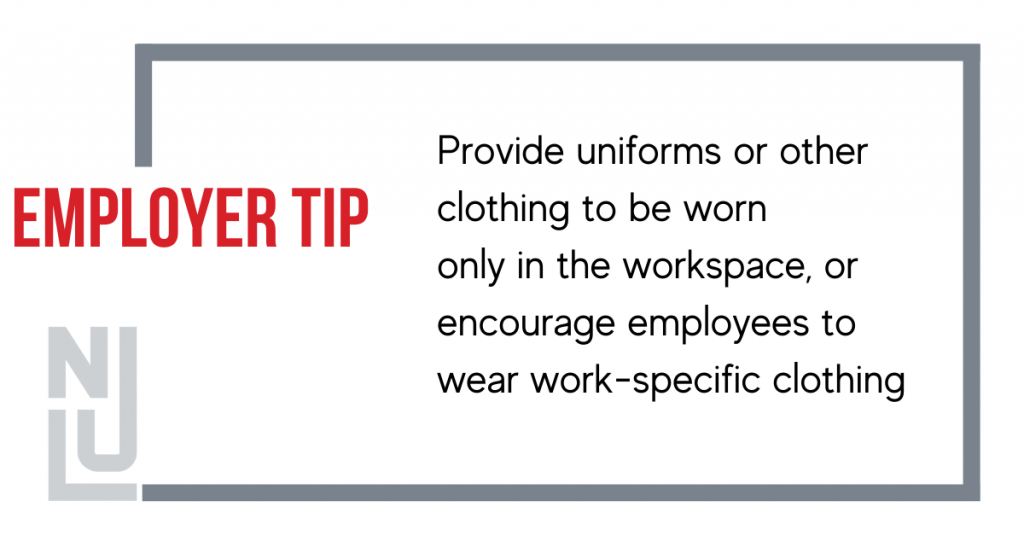
Posted June 9th, 2020 in Top Stories, Legal Insights with Tags COVID-19, COVID-19 for Employers, COVID-19 Products
How Employers Can Prevent Potential “Take-home” Liability for COVID-19
Business owners are facing decisions most never anticipated. Legal directives are not the only factor holding back the economy. Everyone is eager to see workplaces return to normal operations. At the same time, no business wants to put its workers and customers in danger. Though rarely contemplated in the past, potential legal liability for spreading disease should be in the forefront of a merchant’s decision to reopen. Major players such as Amazon and McDonald’s have already been the target of lawsuits alleging that they were a vector for illness.
Political leaders are aware of the legal risks to businesses and are therefore considering potential legislative relief from lawsuits. Immunity laws, however, remain a mere hope, and therefore businesses should be aware of how to minimize their potential legal exposure.
Customers and public visitors to a workspace are one group who might try to sue a business for transmitting COVID-19. Those groups, though, consist of people with relatively minimal contact with any individual business. It would be very difficult for a customer to prove that one business, among all of their other possible exposure sources, caused their specific infection. Employees, in contrast, spend a significant portion of their time in the workplace.
Fortunately for the employer, a direct lawsuit by an employee will in many (if not most) cases, be prohibited by workers’ compensation law. Injuries incurred on the job are typically compensable only through the workers’ compensation system. The employee cannot usually sue the employer for those injuries, even if he or she did not actually receive workers’ compensation benefits.
However, employers should be aware of another possible type of suit arising from an employee’s exposure to pathogens—a secondary exposure, or “take-home,” claim. In other words, even if the employee themselves cannot sue, an infected member of the employee’s household might try to hold the employer responsible for their illness. The recent lawsuit against Amazon alleged, in part, that working conditions in its facilities posed a threat not only to employees but their families.
Take-home claims are well-established in other areas of law, particularly in asbestos litigation. Courts have generally rejected the argument that employers have a duty of care only to their employees and not to an employee’s family. The prevailing rule in most jurisdictions is that an employer may be liable for secondary exposures if it was reasonably foreseeable that its employees might carry a disease-causing agent home and expose others sufficiently to cause illness. In order to win a take-home case, a plaintiff would have to prove several facts:
That the employee was exposed to the virus at work
Difficult to prove, as noted above, but certainly possible.
That the family member was exposed to the virus at home via the employee
Not very difficult to prove, and almost a given;
That the employer was negligent in taking precautions against exposing its employees to the virus
This will depend on the precautions taken;
That the employer’s negligence caused the employee to be exposed and bring the virus home
This will depend on other potential sources of exposure outside the workplace; and
That the family member’s illness resulted from contact with the employee
As with the previous point, this will depend on potential sources of exposure other than the employee.
If a take-home suit is filed, the employer may have several defenses. For example, a business might show that the family member more likely caught COVID-19 from a source other than the employee, or that the employee did not take reasonable precautions against spreading the disease when returning home from work. The many possible sources of exposure in our society make the former defense particularly potent.
Pandemic take-home cases will not be easy for plaintiffs to win. In particular, the causation element—proving that a particular business was the source of the exposure that caused a person’s illness—will be challenging. However, an employee who can show that they worked under difficult conditions might be able to convince a jury to overcome scientific doubt about causation, especially in an atmosphere of fear over the grave consequences that can befall someone who has contracted COVID-19. And one should always keep in mind that lawsuits remain easy to start, even if they are not easy to win.
For that reason, the best step a business can take to protect against COVID-19 take-home claims is to be proactive and diligent in protecting its own workforce. An employer doing its best to make its workplace safe will be less likely to be the target of an opportunistic plaintiff’s lawyer in the aftermath of the pandemic. Sound infection-control practices will defeat one legal element of the claim (negligence) and create doubt on another (causation). In addition to standard disinfection and vector-control practices, employers should consider taking steps such as:
- Providing uniforms or other clothing to be worn only in the workspace, or encouraging employees to wear work-specific clothing;
- Providing time and space for employees to change clothes before and after shifts;
- Giving employees information about household transmission and suggesting ways to minimize spread in the home;
- Encouraging employees to share information on where outside of work they and their families are spending time, so that other potential sources can be identified if a family member falls ill;
- Taking notice of significant transmission hotspots in the area so that they can be investigated as alternative sources in the event of litigation.
Employers who take risks to their employees seriously are the most successful in defending take-home cases. A few simple additional steps can reduce the risk of being held responsible for an employee’s immediate family member becoming ill.
